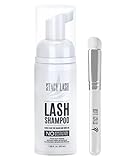All Categories


ACM Economy Wash Bottle, LDPE, Squeeze Bottle Medical Label Tattoo (250ml. / 8oz / 1 Bottle)
Share Tweet
Get it between 2024-12-10 to 2024-12-17. Additional 3 business days for provincial shipping.
*Price and Stocks may change without prior notice
*Packaging of actual item may differ from photo shown
- Electrical items MAY be 110 volts.
- 7 Day Return Policy
- All products are genuine and original
- Cash On Delivery/Cash Upon Pickup Available








ACM Economy Wash Bottle, LDPE, Squeeze Bottle Features
-
Wash bottle used to wash labware and to store washing solutions, such as acetone or deionized water
-
LDPE body for flexibility, elasticity, and impact, stress-cracking, and moisture resistance, and is lightweight
-
Boston round shape for applications that require a rounded body, short neck, and narrow mouth to store liquid samples and solutions, and dry materials
-
Polypropylene screw closure with its angled stem and draw tube molded in one piece for leak-proof applications
-
Spout can be cut back to increase the flow of washing solution
About ACM Economy Wash Bottle, LDPE, Squeeze Bottle
This wash bottle is used to wash labware and to store washing solutions, such as acetone or deionized water. The LDPE (low-density polyethylene) body is lightweight, flexible, and elastic, has an opaque hue, and resists impact, stress cracks, and moisture absorption. Its Boston round shape is used for applications that require a rounded body, short neck, and narrow mouth to store liquid samples, solvents, and chemicals, and dry materials. The screw closure has its stem and draw tube molded in one piece for leak-proof applications, and its angled dispensing nozzle directs the stream of liquid. The spout can be cut back to increase the flow of washing solution. This bottle is suitable for storing and transporting labware washing solutions. Lab bottles are used to store, hold, and mix liquids, powders, and other substances in a wide variety of scientific industries. Lab bottles have a more pronounced neck and shoulder than jars. Lab bottles are manufactured with a combination of characteristics in order to meet the demands of particular applications, such as for solution dispensing, mixing, and weighing, and use in centrifuge operations. They come in many shapes for specific applications, with a variety of mouth or nozzle shapes and sizes for specific use. Lab bottles are made from materials, such as glass (borosilicate or soda-lime) and an array of plastics, which are selected for chemical and thermal expansion resistance, transparency, and their adaptability in a variety of applications. Lab bottle interiors, caps, and lids are often lined with a protective material. Caps and lids help seal bottles to prevent solutions from spilling. The capacity refers to the fluid amount held by a lab bottle, and is commonly measured in milliliters (mL) and liters (l), and sometimes in ounces (oz). Lab bottles are suitable for use in chemistry and biology applications, as well as in pharmaceutical and scientific testing.




 (1)
(1)

















